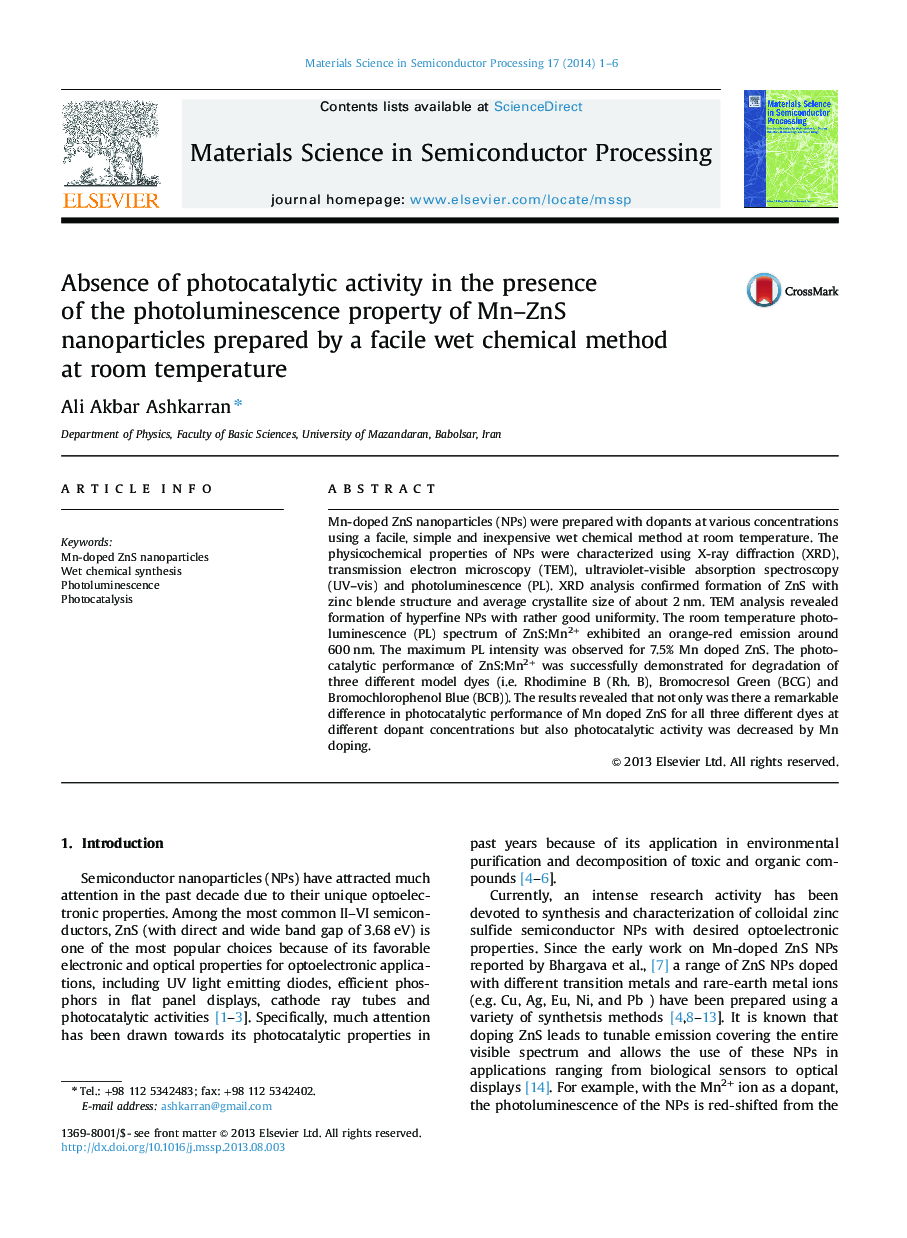| Article ID | Journal | Published Year | Pages | File Type |
|---|---|---|---|---|
| 7119684 | Materials Science in Semiconductor Processing | 2014 | 6 Pages |
Abstract
Mn-doped ZnS nanoparticles (NPs) were prepared with dopants at various concentrations using a facile, simple and inexpensive wet chemical method at room temperature. The physicochemical properties of NPs were characterized using X-ray diffraction (XRD), transmission electron microscopy (TEM), ultraviolet-visible absorption spectroscopy (UV-vis) and photoluminescence (PL). XRD analysis confirmed formation of ZnS with zinc blende structure and average crystallite size of about 2Â nm. TEM analysis revealed formation of hyperfine NPs with rather good uniformity. The room temperature photoluminescence (PL) spectrum of ZnS:Mn2+ exhibited an orange-red emission around 600Â nm. The maximum PL intensity was observed for 7.5% Mn doped ZnS. The photocatalytic performance of ZnS:Mn2+ was successfully demonstrated for degradation of three different model dyes (i.e. Rhodimine B (Rh. B), Bromocresol Green (BCG) and Bromochlorophenol Blue (BCB)). The results revealed that not only was there a remarkable difference in photocatalytic performance of Mn doped ZnS for all three different dyes at different dopant concentrations but also photocatalytic activity was decreased by Mn doping.
Related Topics
Physical Sciences and Engineering
Engineering
Electrical and Electronic Engineering
Authors
Ali Akbar Ashkarran,
